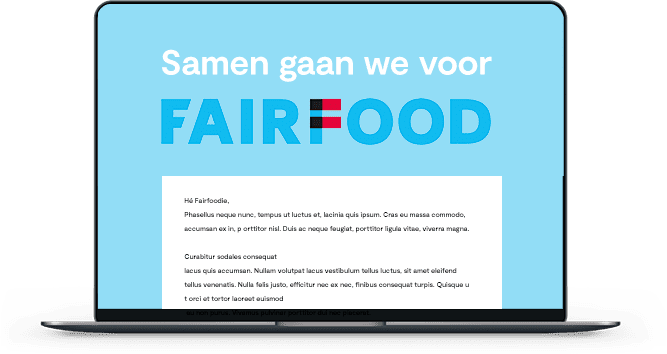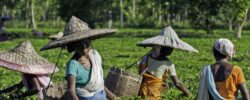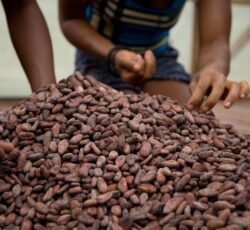Fairfood & Verstegen answer questions on farm-to-fork traceability
Last week marked the very first instalment of Trace Talks, a webinar series in which we invite different food professionals to discuss a future in which all of our food is traceable to the very source. In this edition we discussed the added value of traceability and transparency with Marianne van Keep, the sustainability director of Verstegen. Below you can find the answer to the most pressing questions asked by the webinar audience.
Click here if you missed the webinar and would like to watch the replay. Also, make sure you don’t miss our next webinar; you can find our webinars here.
Does Trace make products more expensive once they are traceable?
Not necessarily. Trace can actually help companies cut down costs of compliance and reduce certain supply chain risks which are cost reductions. Theoretically this could even lead to a price decrease for the end consumer. In the end, it all depends on the specific supply chain and choices made by the companies implementing Trace.
Is the experience with Trace a reason to apply it for all spices and products Verstegen is working with?
This one was answered by Verstegen’s Marianne van Keep: that is our ambition for sure and I would have loved to say that we will be ready by the end of the year. This is of course not the case just yet, but we have a nice basis now, with our twenty most important supply chains in the process of getting connected. There’s a lot of work to do and like I told you it’s great to do.
Do B2B companies not worry that their customers will go around them to the supplier or farmer directly?
A successful supply chain depends a lot on the trust built between the company and its partners. That being said, businesses are able to keep their information private at times. In cases of supply chain visibility on Trace, companies can opt to “pseudonymise” their information, meaning that their suppliers’ suppliers and their purchasers’ purchasers (T+2 and T-2) are not able to see their exact location nor the location or name of their business relationships. Doing so allows companies that want to stay private to participate in the chain of traceability, without having to disclose themselves.
Can you tell us something about interoperability?
Our goal is to make Trace available to as many companies as possible in order to maximise our impact. For this reason, we made the platform as interoperable as we could. Firstly, all transactions can be uploaded through simple Excel files. We chose to do this because XML seems to be the standard file format in which most of the data that we require from supply chain actors has already been stored. Furthermore, Trace can connect to other platforms such as certification systems or ERP’s through an API connection so it can be easily integrated with existing systems. Lastly, our platform is blockchain agnostic, meaning that we can connect it to any blockchain to log our transactions on, depending on the clients’ needs.
What are the costs to trace a supply chain?
To talk in terms of monetary value only, Trace has zero costs for farmers and food workers at the beginning of the supply chain. For every supply chain that wants to use Trace, only one company needs to pay for the traceability subscription which currently amounts to 300 euros per month. In this subscription, companies can Trace a couple of supply chains that can help in validating basic claims.
For advanced traceability and claim verifications, custom features need to be added for which we charge non-profit tariffs. There is also an option for Dutch companies to work with an MVO voucher of 10.000 euros which would cover much of the costs. If you feel that you have a good view of where your supply chain begins and where it ends and if you are fairly sure of what kind of claims you want to verify with this system, then it shouldn’t be a huge investment from your side.
What makes blockchain better than other traceability systems?
Often confused by many, blockchain and traceability systems do not mean the same. Blockchain is a decentralised database and traceability is a whole bunch of activities and systems that may or may not use a decentralised or cloud databases. Blockchain, however, can help traceability systems become more transparent by adding value and trust through a public ledger of transactions.
How can the poorest farmers who may not have a mobile phone be reached or included? Or is having a mobile phone a prerequisite to be included?
A phone is certainly not a prerequisite to be included in the platform. A farmer gets her or his digital identity from the report made by his first buyer. And when it comes to giving compensation to the farmers through digital currencies, farmers can gain access through phone, SMS or even a laminated card with a QR code that farmers can bring along during their sales. Thanks to advancements in banking technology, we are often able to send money to farmers directly with very limited technology or even to areas where internet service is not so good.
Do you offer a trial for Trace?
In its current stage, Trace is not a “hands-off” tool that we can simply open up for companies to start using by themselves. It still requires some onboarding and training from our side. For this reason, we offer a demo instead of a trial, during which we show you what your supply chain could look like in Trace and guide you through the platform.
Have there been concerns from your partners, especially producers, along the supply chain in terms of an additional administrative “burden” for the reporting (human and financial resources)?
Trace mostly requires work in the early stages if adopting it – for onboarding and mapping the supply chains, creating profiles, inviting suppliers, adding farmers and so on. Once everything is set up, Trace requires minimum effort and integrates very well in existing processes. It is often only a matter of filling in an Excel sheet and uploading transitions in bulk to the system or even simply adding and confirming a single transaction after every purchase and sale.
In terms of data collection on the farmers in the nutmeg case of Verstegen: how has that been conducted and verified?
In the case of Verstegen’s nutmeg project, farmers are connected to the system through their phone numbers. After every transaction, the purchaser logs the details – including the total amount paid to the producers. Farmers then receive an SMS to either validate or reject the fact that these transactions were made. This evidence is then uploaded directly into a public blockchain. Doing so allows both company and consumers to validate the transactions and make sure that the farmers received a the agreed upon payment for their products.



